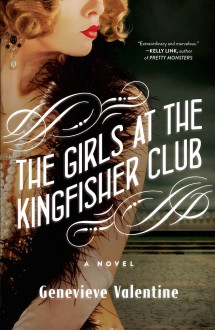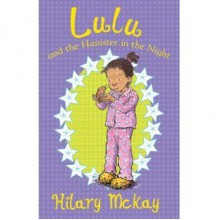I have said quite a bit about how much I loved Girls at the Kingfisher Club by Genevieve Valentine when I first read it. I am happy to say that rereading it only added more depth and appreciation for what Valentine is doing here. Jo is one of the most wonderful, heartbreaking characters I can think of, and I’m still amazed by how well the other characters are done, even the most minor ones.
Thanks to a comment from Kate in librarian book club, I really noticed the fairy-tale-ness this time through. Even though Valentine is playing fast and loose with the specifics, she also hearkens back to fairy tales in some really interesting ways. Sometimes this happens in the choice of language, which is deceptively simple and detached while actually full of emotional punches. (“It frightened her how deep her sobs could reach, as if someone was pulling sorrow from her bones.”)
There’s also their father’s detachment and unkindness, which is present in the original fairy tale (you cannot convince me that king was a good parent). It transplants surprisingly well to this setting, because Valentine is partly making a point about rich men who view their daughters as objects that they own. Another one of those devastating sentences: “He was always most terrible when he was trying to seem kind.”
One of the things you notice in fairy tales are the rules that the hero or heroine has to follow to survive. Sometimes these seem arbitrary, but they actually aren’t. In this book, Jo’s the one that sets the rules (which, interestingly, are given their own section as if to highlight their importance):
Never tell a man your name. Never mention where you live, or any place we go. Never let a man take you anywhere; if you take one into the alley to neck, tell one of your sisters, and come back as soon as you can. Never fall for a man so hard you can’t pull your heart back in time. We’ll leave without you if we have to.
The fact that it’s Jo setting the rules is important, I think, because Jo isn’t the usual fairy tale heroine. She’s sharp and angry and distrustful. Unlike her sisters, she’s not quite a Princess; she’s a General. I noticed this partly in a pivotal moment, when Jo is speaking to her father. Valentine’s choice of language underscores both the fairy tale echo and Jo’s liminal place in it: “Then it was silent, and when Jo spoke it gave her words the gravity of a curse. ‘They’re gone,’ she said, ‘and you’ll never see them again.'”
Because the other strand in this book is learning how to be free when you haven’t been, when your soul has grown around something dark and twisted. “I’m my father’s daughter,” Jo thinks at one point, and it’s true–but it’s not all of her. She has to relearn “how people related to each other, and how you met the world when you weren’t trying to hide something from someone.” She has to learn how to be a sister, and not a General. This strand hits me right in every single one of my feels. Her fears and struggles and desires are achingly familiar to me.
What’s interesting is how much of these same themes and feelings are present in Of Mice and Magic. Unlike GATKC, where we’re immersed in Jo’s point of view, OMM is told from an outsider’s perspective. Harriet, a hamster princess and adventurer, is the one who rescues the mouse princesses from their father. But like the Hamilton sisters, the mouse sisters love to dance “more than anything in the world.” And like the Hamilton sisters, the mouse sisters stand together against their father’s rage (“but still none of them said a word”).
I’m fascinated by the fact that Vernon manages to tell a pretty complex story about abusive parents and winning your freedom which is also totally appropriate for its audience, which neither talks down to children nor gives them more than they can handle. The mouse king’s selfishness and anger is shown clearly, but the emphasis is on the bonds between the sisters and Harriet’s resourcefulness in setting them free.
It all pays off when the mouse king is left in the ruins of his castle and the sisters escape to the world and freedom. The scene ends with, “and not a single one of the princesses looked back.” It’s a line that would be equally at home in GATKC, and that also resonates deeply.
I appreciated the way Vernon also shows Harriet, another princess, who rescues them and that the story gives us many different ways to be a princess. It’s not that Harriet’s way is the only right one. The mice will have to learn their own paths. To point out the obvious subtext, we’re not being told that there is one right way to be a girl. We all have to find our ways.
“The Twelve Dancing Princesses” has always been one of my favorite fairy tales, and I’m really pleased to have both of these lovely retellings to recommend. Although they’re certainly different in terms of setting and tone, their strengths and similarities in terms of theme make both books powerful separately and together.

 Log in with Facebook
Log in with Facebook 








